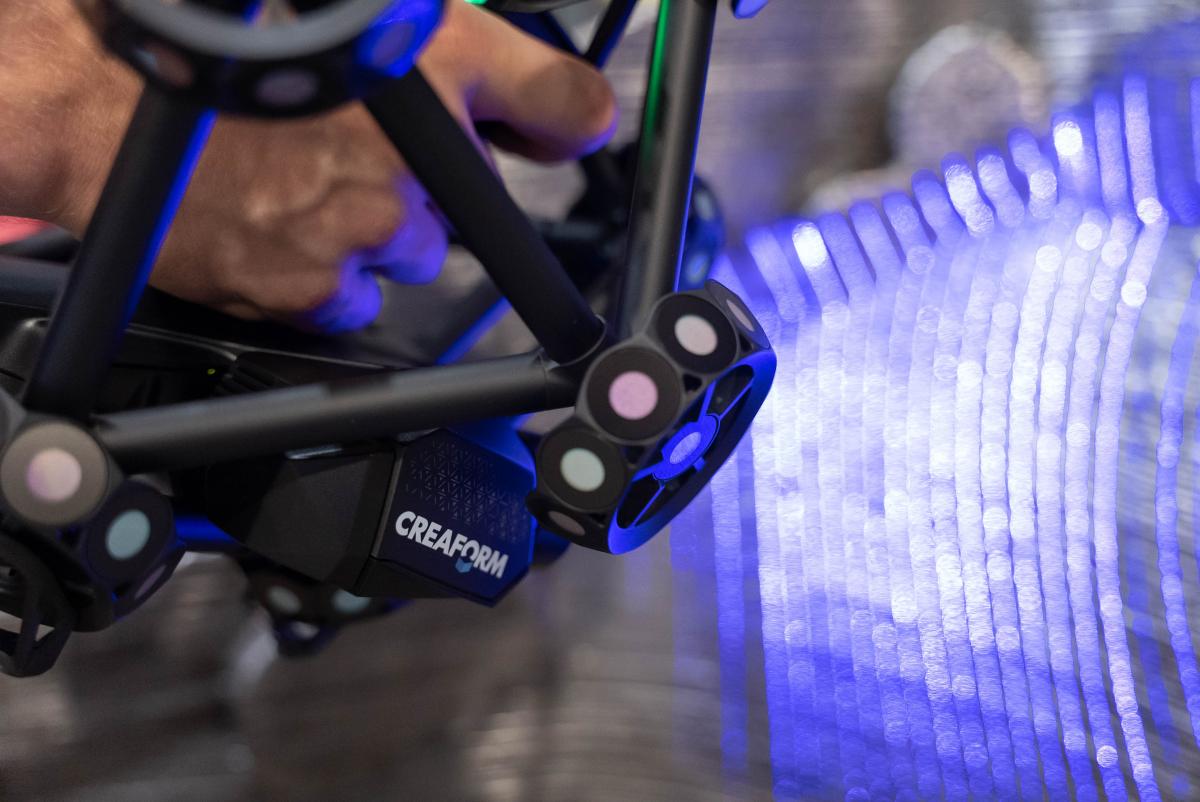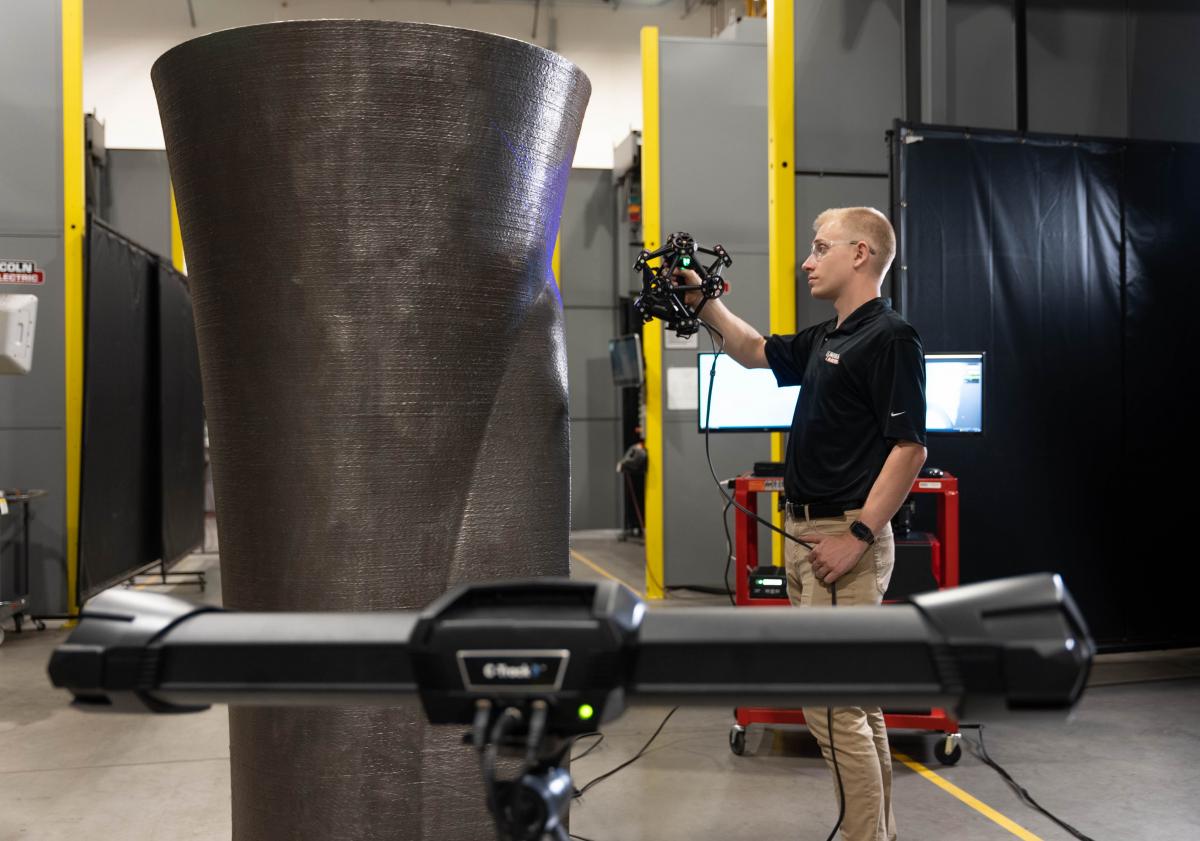Exit this form
Are you sure you want to quit this form?
Manufacturing teams often face quality consistency problems in producing components, especially metal parts.
In additive manufacturing processes, parts are 3D-printed layer by layer. However, the strength of the plane of layers may not always be consistent. In theory, technicians can assess every layer being laid down; however, in reality, doing so would be time-consuming, inefficient and prone to human error.
Inspection teams in additive manufacturing processes need solutions to more quickly ensure that each part is being 3D-printed is consistent and adheres to both the original design intent and expected tolerances.
Today’s 3D printers can create much larger components than their predecessors. Nevertheless, size is still problematic when it comes to conducting quality control on very large parts that measure several meters (or feet) and weigh thousands of pounds.
Traditional quality control systems, like coordinate measurement machines (CMMs), can’t resolve these inspection challenges as bottlenecks quickly occur due to a lack of qualified metrologists or sheer production volume. Also, bringing very large parts to the CMM can be cumbersome, labor-intensive and simply impossible.
For manufacturers who produce parts at very high temperatures, inspection teams also must wait for the components to cool before assessing their quality. This can bog down timelines and throughput.
In today’s competitive landscape, timing is everything—especially when it comes to a company’s critical period to launch new products on the market or deliver products to a B2B customer.

3D measurement technologies, including portable 3D scanners and optical CMMs, have become a boon to additive manufacturing suppliers looking to mitigate the aforementioned quality control challenges and produce better parts.
Portability: Quality control technicians can use 3D scanning technologies right on the shop floor, wherever measurements are required; components, especially large ones, therefore don’t have to be moved around. 3D scanners can be operated in any environment, regardless of temperature variations, dust, and other harsh conditions.
Accuracy: 3D scanners provide the high-resolution and quality of data to better assess any type of part, regardless of the size, complexity, geometry, material and surface finish. For example, 3D scanners are ideal for inspecting the quality of metal parts that have just be 3D-printed—even if they are still hot. In addition, components can be scanned at any time during the 3D printing process.
Speed: Fast data acquisition times means that quality control teams can 3D scan a large part in minutes rather than hours. Meshes can be seamlessly exported to 3D printing or CAD software for further analysis and design changes. Because parts can be scanned while they are still hot, teams achieve substantial productivity gains and speed up a company’s service.
3D measurement technologies, including the HandySCAN 3D scanner and MetraSCAN 3D, are popular solutions used in additive manufacturing.

Thanks to 3D scanners, additive manufacturing teams are assured that their 3D measurement data is reliable, repeatable and accurate. This is critical for companies that want to leverage the benefits of 3D printing, all while maintaining the level of part quality customers have come to expect.
With handheld 3D scanners, additive manufacturing engineers and technicians can quickly scan parts for in-line or at-line inspections, which substantially saves on inspection times and speeds up throughput.
When a part is 3D-printed, whether at the prototyping or quality control stage, highly precise measurements can be acquired and analyzed for any deviations or design issues before starting production runs.
Additive manufacturing teams gain peace of mind that they can base their design and quality control decisions on accurate data, thereby ensuring that end products will meet customers’ quality requirements. In addition, 3D scanners enable manufacturers to inspect different parts concurrently to ramp up quality control speeds during high-volume production cycles.
Client: Lincoln Electric Additive Solutions
Lincoln Electric Additive Solutions specializes in producing large-format metal parts using additive manufacturing.
The team uses steel, stainless steel, nickel-iron, nickel alloys and nickel-aluminum-bronze to develop metal part prototypes and replacements. Their clients range from the aerospace to heavy equipment and transportation sectors.
They have been using the HandySCAN 3D scanner and MetraSCAN optical CMM to quickly determine the dimensions and quality of large 3D-printed metal parts early on in the manufacturing process. The company has been able to reduce inspection times as well as costly production errors.
Mark Douglas, Business Development Manager at Lincoln Electric Additive Solutions, explains the tremendous value 3D scanning technologies have brought to their additive manufacturing process: “We have the confidence that every part that goes out the door is according to customer expectations.”
You have a specific question. You need the advice of a specialist. We are here to guide you.